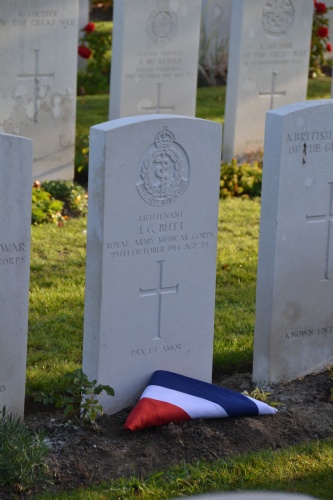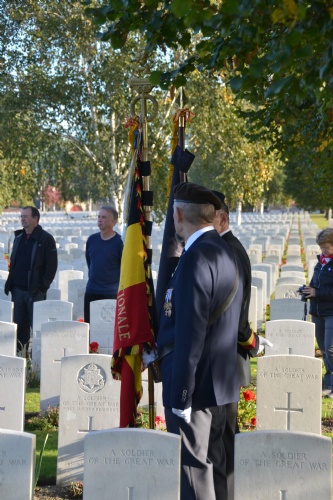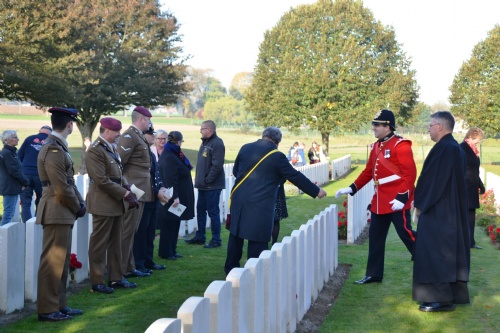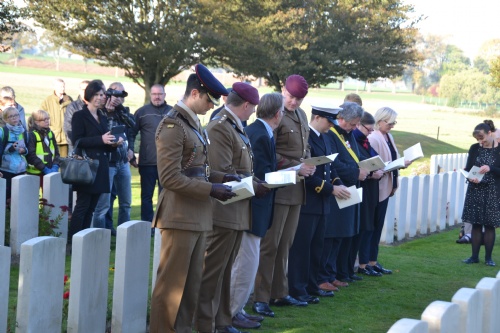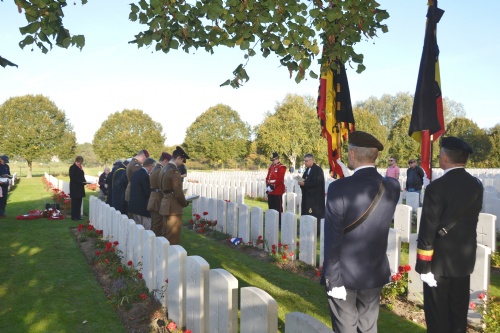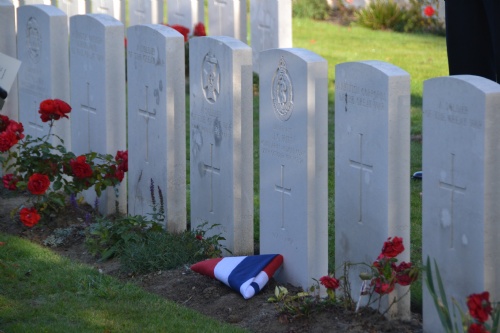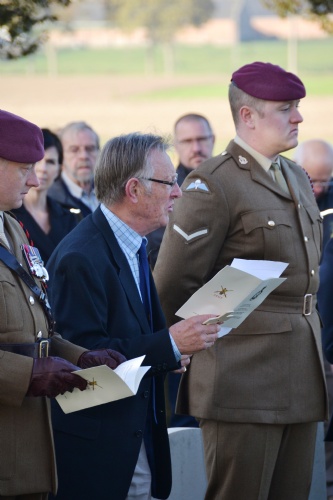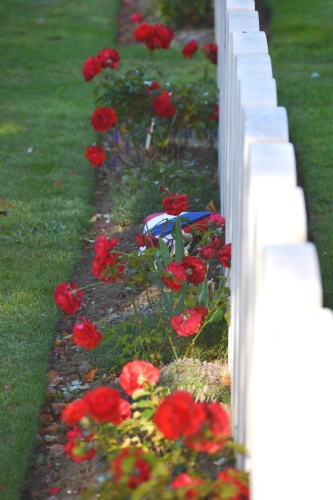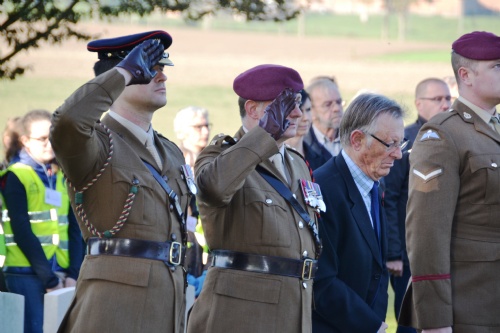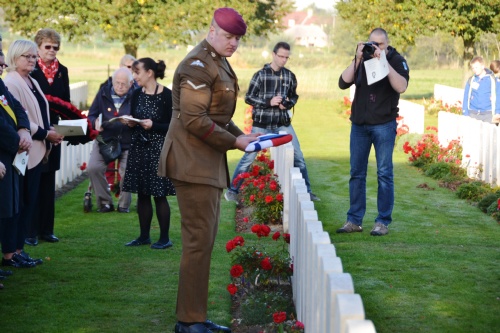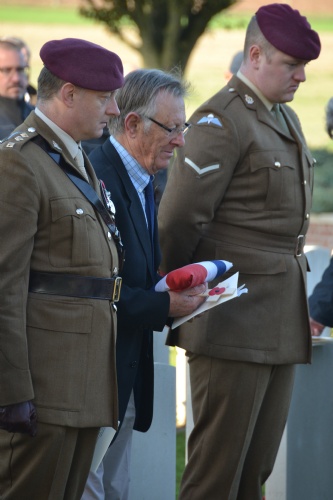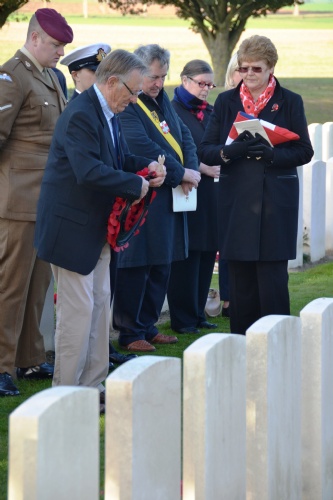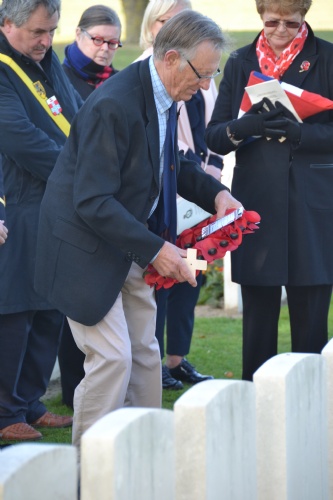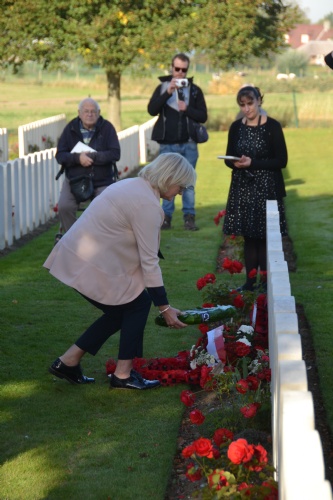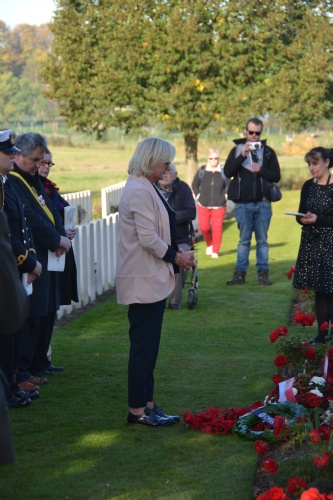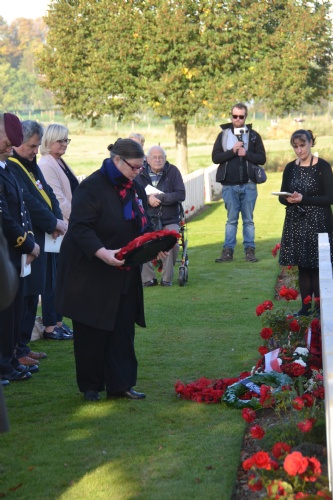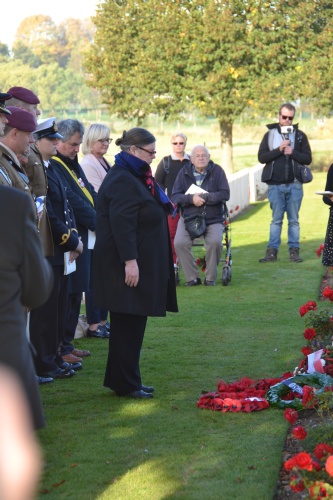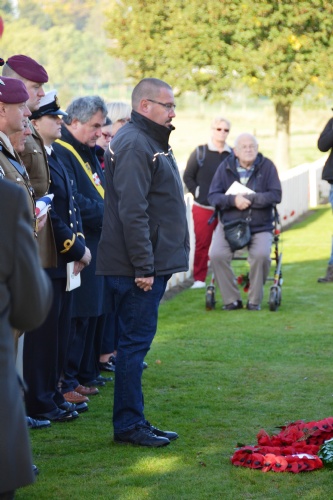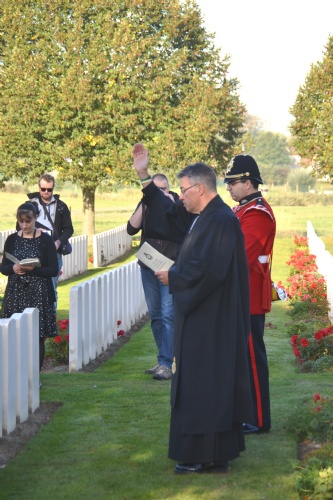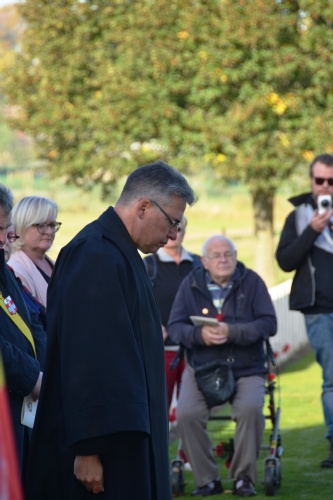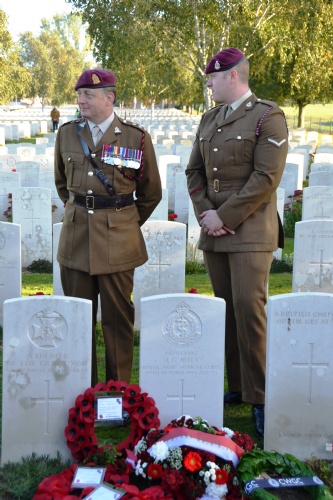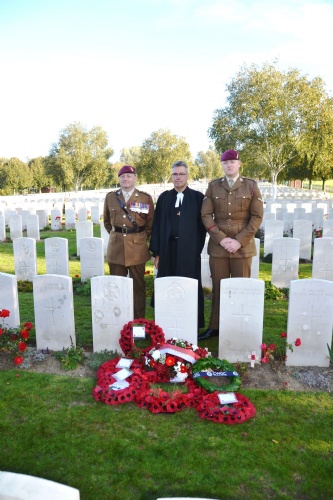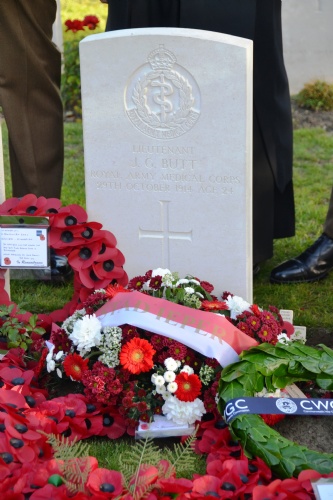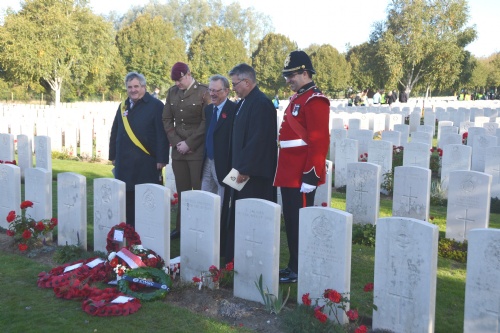Op 9 oktober 2018 vond een plechtigheid plaats op
Hooge Crater Cemetery voor Lieutenant Jon Gillis Butt, Royal Army Medical Corps, toegevoegd aan het 1e Bataljon Grenadier Guards. Hij sneuvelde op 29 oktober 1914. Tot op heden stond hij vermeld op de Menenpoort als een vermiste soldaat. Nieuw onderzoek toonde echter aan dat hij wel degelijk begraven was op Hooge Crater Cemetery.
On 9 October 2018 a rededication service was held at
Hooge Crater Cemetery for Lt. John Gilles Butt, Royal Army Medical Corps, attached to 1st Battalion Grenadier Guards who was killed 29th October 1914.
Lieutenant John Gillis Butt MB, known as Jack, and his twin sister, Gladys, were born on 13 July 1890 in Lucknow, India. They were the only children of Colonel Edward Armiston Butt, an Army surgeon, and his wife, Helen Mary Garrat. Lieutenant Butt was educated at Marlborough College and Trinity College Dublin, where he studied medicine. After finishing his studies, he was commissioned into the Royal Army Medical Corps as a Lieutenant on 31 July 1914, 4 days before the outbreak of the First World War. He was attached to 1st Battalion Grenadier Guards.

The Battalion was mobilised on 5 October 1914 landing at Zeebrugge on 7 October. Almost immediaterly they found themselves on the front line of the First Battle of Ypres. On the eve of the battle Lieutenant Butt wrote to his mother:
'Just a few lines to let you know that I am free. We have had a lot of marching since we landed here but not much fighting up to the present, only small affairs with outposts. We have been in billets since we landed so on the whole very comfortable, but sleep is very short as we stand to arms sometimes at 4 in the morning and get to bed at night when we can' ... 'I'm sorry I can't let you now where we are but things as far as I know are going well'.
The letter was signed '
Your Affectionate son, Jack'. The letter was written just eleven days before his death. It is for this reason that his family have selected Ruyard Kipling's peom 'My Boy Jack' as a reading for his rededication service.
On 28 October 1914 1st Battalion Grenadier Guards were located east of the village of Gheluvelt near the Kruisecke crossroads, on the southern side of the Menin Road. The following day the Germans attacked. Lieutenant Butt and his orderly were in a ditch tending Colonel M Earle who had been wounded. The Germans rushed through the area and Lieutenant Butt and his orderly were killed.
In the confusion of battle there was at first some uncertainty as to the fate of Lieutenant Butt. It was considered that he may have been taken prisoner and his family made extensive enquiries as to his whereabouts. However, as accounts of the fighting that day came to light it became clear that the likehood was that Lieutenant Butt had been killed on 29 October 1914 and in 1916 his death was presumed. He is commemorated in the Menin Gate.
New research has shown that Lieutenant Butt was buried where he fell. After the war, his body was moved to Hooge Crater Cemetery where he was reinterred as un Unknown Lieutenant of the Royal Army Medical Corps. However, it is now known that he is buried in this grave. Today we will remember Lieutenant Jon Gillis Butt MB and his grave will be rededicated.
Hooge Chateau was located on the front line for much of the First World War and was the scene of very fierce fighting throughout. The Commonwealth War Graves Commission's Hooge Crater Cemetery was established in early 1917 but greatly increased after the Armistice when graves were brought in from smaller cemeteries and the surrounding battlefields of Zillebeke, Zantvoorde and Gheluvelt, including the area were Lieutenant Butt had died. There are now 5,916 Commonwealth servicemen of the First World War buried or commemorated in this cemetery, but sadly, more than half of whom, remain unidentified.
The service was conducted by Chaplain Tim Flowers,4th Btn. Mercian Rgt. and attended by the great nephew of Lt. Butt., Nicolas Previté.
